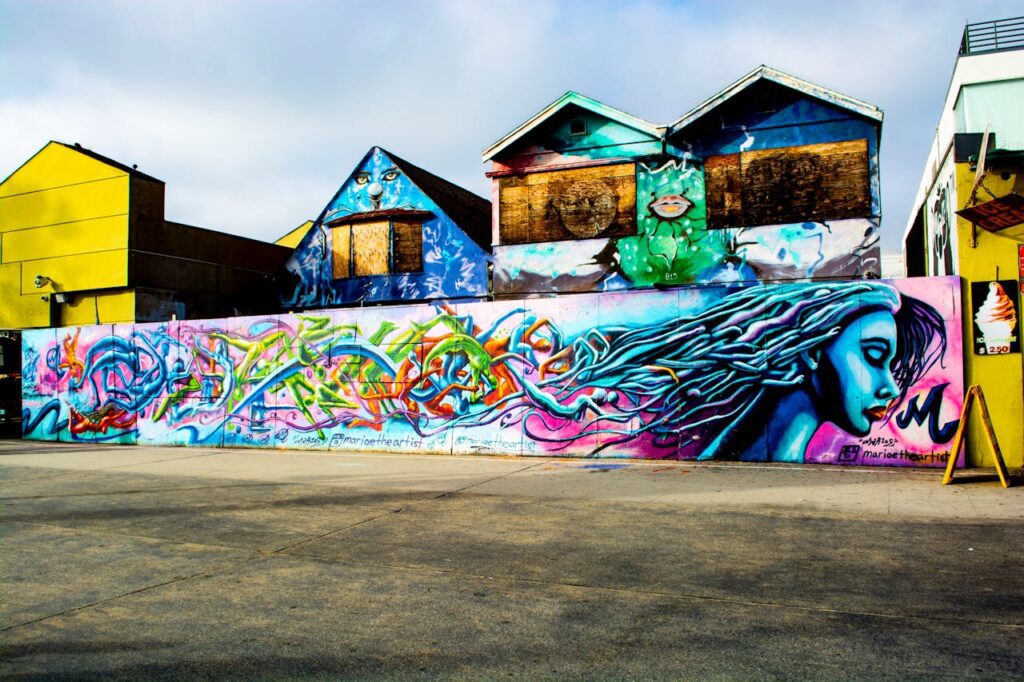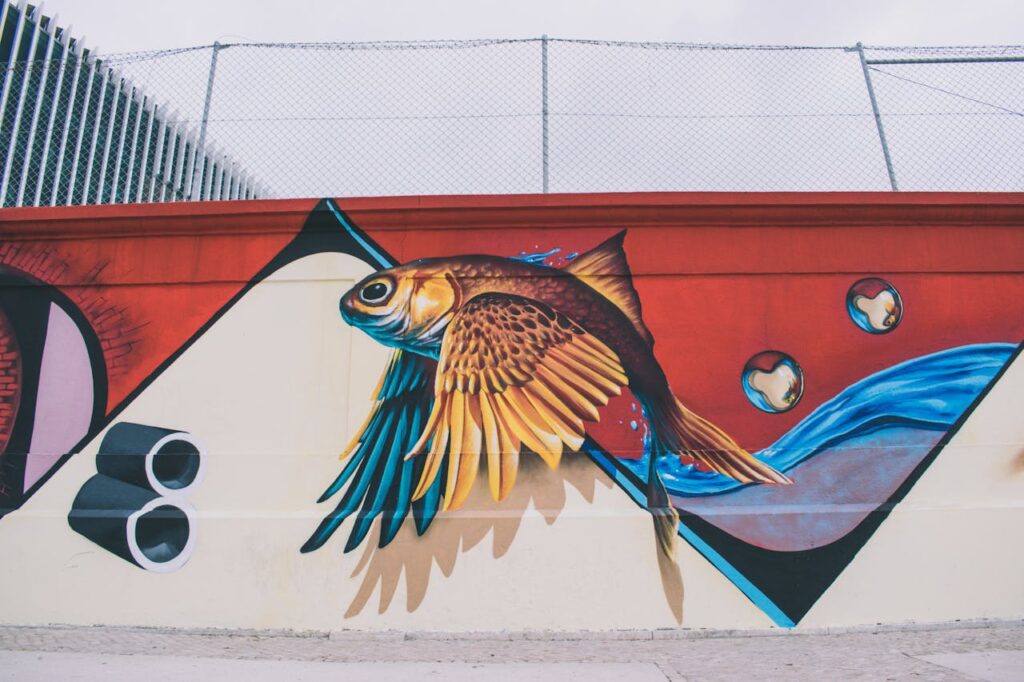The Art of the Streets: 23 Cool Facts About Graffiti
Graffiti, often seen as the voice of the streets, combines color, daring, and social commentary in a tapestry of urban visual expression. From ancient scribbles on Roman walls to the vibrant murals of today’s metropolises, graffiti has always been a powerful form of communication and artistry. Here, we delve into 23 cool and interesting facts about graffiti, showcasing its evolution, impact, and the creativity it unleashes across the globe.

Ancient Beginnings: Graffiti isn’t a modern phenomenon. Ancient civilizations, including the Egyptians, Greeks, and Romans, practiced graffiti, using it to declare love, make political statements, and even doodle, much like today.
Name Game: The word “graffiti” comes from the Italian word “graffiato,” meaning “scratched.” Originally, graffiti was scratched onto surfaces, a technique still used in some forms of modern street art.
Political Voices: In the 20th century, graffiti became a tool for political expression. For example, the Berlin Wall was covered in graffiti that voiced the desires for freedom and unity during its existence.
Subway Artistry: New York City’s subway trains were iconic canvases in the 1970s and ’80s. Artists would cover entire cars with elaborate designs, a movement that was both criticized and celebrated.
Banksy’s Anonymity: One of the most famous graffiti artists, Banksy, remains anonymous. His works, often satirical and politically charged, have appeared worldwide, sparking conversations and controversies.
Legal Spaces: Some cities have designated legal walls or areas for graffiti, recognizing it as a form of art and expression. These spaces allow artists to showcase their work without the risk of legal repercussions.
Graffiti Wars: The rivalry between graffiti artists can lead to “graffiti wars,” where artists paint over each other’s work in a battle for dominance and visibility in the urban landscape.
Cave Art Connection: Some consider ancient cave paintings as the earliest forms of graffiti. These prehistoric images tell stories, document history, and express beliefs, linking past and present forms of expression.
Stencil Revolution: Stencils have revolutionized graffiti, allowing artists to create detailed and reproducible images quickly. This technique has been popularized by artists like Banksy, making complex art accessible.
Environmental Graffiti: Moss graffiti, a blend of moss, yogurt, and sugar, grows over time, offering an eco-friendly alternative to spray paint, embodying the fusion of art, activism, and nature.
Iconic Tags: The tag, an artist’s signature style of writing their name, is fundamental in graffiti culture. It’s both a claim of territory and a mark of individuality within the urban canvas.
Graffiti in Conflict Zones: In areas of conflict, graffiti often serves as a powerful medium of resistance and solidarity, offering insights into the struggles and hopes of communities.

- Guinness World Record: The longest graffiti scroll, measured at 7,366.5 meters, was created in Dubai, UAE, in 2014, showcasing the vast scale and collaborative spirit within the graffiti community.
- Art or Vandalism?: The debate over whether graffiti is art or vandalism is ongoing. While some view it as a form of property damage, others see it as a legitimate and vibrant form of urban art.
- Festival Celebrations: Graffiti festivals around the world, such as POW! WOW! Hawaii, celebrate street art and graffiti, bringing together artists to transform cities with their colorful and thought-provoking works.
- Economic Impact: Graffiti can affect property values, with some arguing it decreases them due to associations with neglect, while others believe it can increase interest and tourism in an area.
- Restorative Justice: Some cities have graffiti removal programs that involve the offenders in cleaning up or painting over graffiti, aiming to educate them about the impact of their actions.
- Graffiti in Galleries: Street art and graffiti have been embraced by the art world, with works being displayed in galleries and museums, blurring the lines between public and institutional art.
- Celebrity Influence: Celebrities like Justin Bieber and Chris Brown have tried their hand at graffiti, bringing more attention to the art form and its cultural relevance.
- Technological Advances: Digital graffiti, using projectors and digital interfaces, allows artists to create ephemeral works that can be displayed anywhere without permanently altering surfaces.
- Preserving History: Some pieces of graffiti have become protected as cultural landmarks, recognizing their historical and artistic value in narrating urban stories.
- Global Language: Graffiti is a global language, with artists traveling and leaving their marks worldwide, creating a cross-cultural exchange of styles, techniques, and messages.
- Interactive Graffiti: Augmented reality and QR codes have introduced interactive elements to graffiti, allowing viewers to engage with the art in new and immersive ways.
These fun facts about graffiti illustrate the depth and diversity of this vibrant art form. From its ancient origins to its modern-day manifestations, graffiti continues to fascinate, provoke, and inspire. It serves as a reminder of the power of public expression and the ongoing conversation between art and society.









